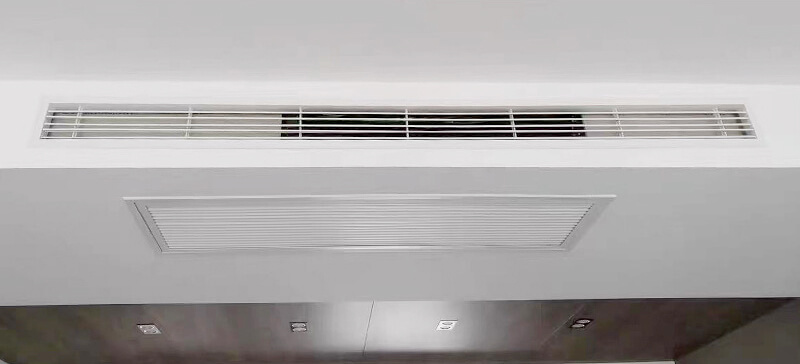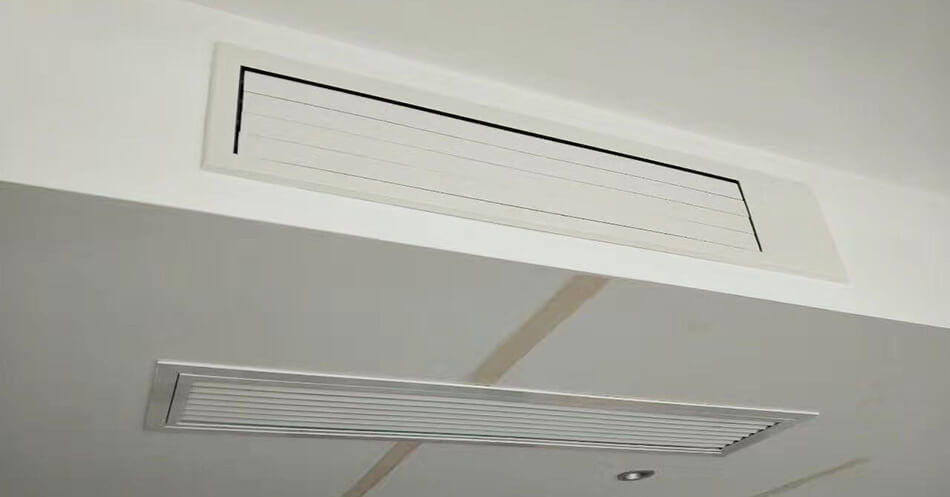In today’s buildings, whether they are commercial spaces, residential areas, or specialized environments like hospitals and schools, HVAC systems play a pivotal role. Not only do these systems manage air quality and temperature control, but they also ensure that the environments remain safe and secure. An often overlooked aspect of these systems is the incorporation of security grilles and registers, which provide an essential barrier against potential security breaches while maintaining efficient airflow.
What Are Security Grilles and Registers?
Defining the Essentials of HVAC Security
Security grilles and registers are critical components designed to cover duct openings in HVAC systems. Their primary purpose is to prevent unauthorized access to the ductwork while allowing air to flow seamlessly throughout the building. Maximum security grilles are specifically engineered to provide enhanced protection, making them indispensable in high-security areas where standard grilles might not suffice.
Standard vs. Maximum Security: Knowing the Difference
While standard grilles are sufficient for general applications, maximum security grilles are built with robust materials and unique designs to resist tampering and withstand extreme conditions. These are often used in places where safety and security are of utmost priority, such as in correctional facilities or psychiatric hospitals.
Importance of Security in HVAC Systems
Securing Environments Through Enhanced HVAC Measures
The security of HVAC systems is not just about maintaining functionality but also about safeguarding the occupants and the structure of the building itself. In high-risk environments, the significance of installing secure grilles and registers cannot be overstated. They prevent intrusions that could lead to safety hazards or facilitate escapes in a correctional setting.
Mitigating Risks with Advanced Solutions
Utilizing maximum security grilles helps mitigate risks such as vandalism, break-ins, and other security threats. This level of security is crucial for maintaining the integrity of the building’s HVAC system and, by extension, the entire facility’s safety. Security grilles and registers serve as a first line of defense, ensuring that every point of entry via the ductwork is secured against potential breaches.

Types of Maximum Security Grilles and Registers
Exploring the Varieties and Their Applications
When it comes to enhancing the security of HVAC systems, not all grilles and registers are created equal. Maximum security grilles and registers come in various designs and materials, each tailored to meet specific safety standards and environmental needs. Understanding the different types available can help facility managers and security professionals make informed decisions about which products are best suited for their particular scenarios.
Heavy-Duty Steel Grilles
Robust Protection for High-Risk Areas
One of the most common materials used for maximum security grilles is heavy-duty steel. These grilles are designed to withstand significant physical abuse, making them ideal for high-security environments like correctional facilities or detention centers. They typically feature tamper-proof screws and reinforced frames to resist any attempts at dislodging or penetrating the grille.
Anti-Ligature Grilles
Safety-First Design for Sensitive Settings
In settings such as hospitals or mental health facilities, anti-ligature grilles are crucial. These are designed with safety in mind, ensuring there are no protrusions or edges that could be used for self-harm. The smooth, rounded edges and flush mounts not only enhance safety but also maintain a high level of airflow efficiency, crucial for maintaining the health standards required in such environments.
Customizable Security Bars
Tailored Solutions for Unique Requirements
Some facilities require customized solutions due to unique architectural features or specific security needs. Customizable security bars can be added to grilles to increase the level of security. These bars are often adjustable and can be designed to fit various sizes and shapes of duct openings, providing an extra layer of protection that is tailored to the specific dimensions and risks of a building.
Advanced Materials and Finishes
Durability Meets Aesthetic
Advancements in materials science have led to the development of grilles and registers that not only offer maximum security but also come in a variety of finishes that can blend with or enhance the building’s interior design. Materials like aluminum and stainless steel offer durability and are resistant to corrosion, which is particularly important in environments with high moisture levels or chemical exposures.
Features and Innovations
Evolving Designs for Enhanced Security and Efficiency
As the demand for safer and more efficient buildings increases, the features and innovations in maximum security grilles and registers have become more sophisticated. These advancements not only improve security but also enhance the overall functionality of HVAC systems, ensuring optimal airflow and environmental comfort.
Anti-Tamper Features
Ensuring Uncompromised Security
Modern security grilles are equipped with anti-tamper features such as specialized screws and hidden fastenings that make it extremely difficult for unauthorized individuals to manipulate or remove the grille. This level of security is crucial in preventing tampering that could lead to security breaches or system damage.
Improved Airflow Design
Optimizing Efficiency Without Compromising Security
Innovation in grille design also focuses on maximizing airflow efficiency. New models feature designs that allow more air to pass through without reducing the security level. This is achieved through precise engineering of grille patterns and spacing, ensuring that security does not come at the cost of ventilation efficiency.
Noise Reduction Technologies
Creating a Quieter Environment
Another significant innovation is the integration of noise reduction technologies in grilles and registers. These designs help to dampen the sound of air passing through HVAC systems, which is particularly beneficial in environments like hospitals and offices where noise levels can affect comfort and productivity.

Future Trends in Security and Ventilation
Anticipating Innovations in HVAC Security Technologies
The field of HVAC security is rapidly evolving, driven by technological advancements and a growing awareness of the need for integrated security in building management systems. Looking ahead, several key trends are poised to shape the future of security grilles and registers.
Integration with Smart Building Technologies
Harnessing IoT and AI for Enhanced Security
One of the most significant trends is the integration of HVAC components with smart building technologies. Security grilles and registers are expected to become smarter, incorporating sensors and IoT (Internet of Things) connectivity that allow for real-time monitoring and control. This technology enables remote diagnostics and alerts for any security breaches or operational issues, enhancing both security and efficiency.
Sustainable and Energy-Efficient Designs
Aligning Security with Environmental Goals
As sustainability becomes a priority, future security grilles and registers will likely emphasize energy efficiency and reduced environmental impact. Innovations may include materials that improve airflow while reducing energy consumption, or designs that integrate with energy recovery systems to enhance overall building sustainability.
Enhanced Customizability
Tailored Solutions for Complex Security Needs
Advancements in manufacturing technologies like 3D printing could lead to more customizable security solutions. These technologies allow for grilles and registers to be tailored to specific security needs and architectural constraints, providing both improved protection and aesthetic integration with building designs.
Conclusion
A Secure and Efficient Future for HVAC Systems
The importance of security in HVAC systems cannot be overstated. Security grilles and registers play a crucial role in safeguarding facilities while ensuring that ventilation systems operate efficiently and effectively. As we have explored, these components are not only vital for maintaining indoor air quality but also for preventing unauthorized access that could compromise building security.
The future holds promising advancements in the design and technology of HVAC security components. With the integration of smart technologies and a focus on sustainability, security grilles and registers are set to become more efficient, customizable, and integral to the safety and operational integrity of modern buildings.
If you want to know more, please click below:
- Grilles, Registers & Diffusers – The Ultimate Guide
- HVAC Linear Slot Diffusers – The Ultimate Guide
- HVAC Egg Crate Diffuser – The Ultimate Guide
- HVAC Jet Nozzle Diffuser – The Ultimate Guide
- HVAC Linear Bar Grilles – The Ultimate Guide
- HVAC Air Swirl Diffusers – The Ultimate Guide
- HVAC Round Ceiling Diffusers – The Ultimate Guide
- Round Ceiling Diffusers – The Ultimate Guide
- Exhaust Air Louver – The Ultimate Guide
- HVAC Registers – The Ultimate Guide


